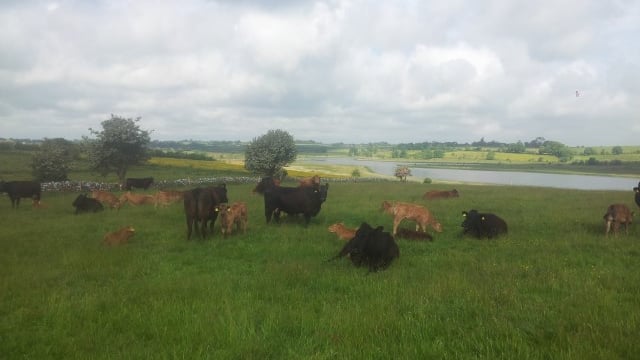Sponsored Article
What will your break-even milk price be post expansion?
Sponsored Article
COMMENT: Amid the countdown to quota removal in April 2015, it is generally forgotten that availability of quota has not been an obstacle to dairy expansion in Connacht or much of Ulster for the past 10 years.
Unfortunately, as far as I am aware, no proper analysis of the impact of this has been carried out. This is a terrible oversight on the industry’s part as the conclusions would provide some very valuable guidelines to the rest of the country amid the frenzied countdown to 2015.
I have looked at data from a sample of Connacht and Ulster farmers. What have they in common?
- All have increased milk supply over the past 10 years by 20 to 100 per cent in some cases
- All have invested heavily in cows, land development, milking facilities, cow accommodation, slurry storage and so on
- In general this money has been cautiously spent. Other farmers that invested in extravagant housing or unnecessary machinery went out of business in 2009 and 2012/13
- Majority of farmers in the sample have young families with a large and increasing demand for personal drawings from the farm alongside legitimate and reasonable lifestyle expectations
- On Profit Monitor or equivalent report, these farmers are average, not in the top 10 per cent but certainly not at the bottom of the pile and I presume significantly ahead of the majority of dairy farmers who do not complete the profit monitor
- They are all increasing EBI, measuring grass, getting cows out to grass early in the spring, improving milk solids and so on.
Break-even milk price
On adding back personal drawings to cover family living expenses, provision for taxation, modest capital investment to cover depreciation and capital repayments to banks, this sample of farmers needed an average milk price of 34.2c/litre in 2011 just to stay afloat. This rose to 38.5 c/litre in 2012 due to adverse weather conditions.
At the recent Teagasc Dairy Conference in Limerick, Jim Woulfe of Dairygold reminded us that the average milk price over the past seven years was 31.5c/litre.
So how is this sample of expanded dairy farmers remaining solvent? Thankfully for them due to their emphasis on EBI and grass, they are producing milk of good constituents that is thankfully delivering a milk price of 4-7 c/litre higher than the average guy, thus keeping them in break-even territory. Otherwise, the brutal reality for a lot of these guys is that they would now be gone one out of business.
Remember these guys are supplying 20 and 100 per cent more milk than they were 10 years ago. This is helping the industry meet its targets in terms of milk throughput, job creation in processing and distribution but also crucially, on export markets.
Dairy expansion brings undoubted benefits to the industry and the wider Irish economy. However we don’t hear as much about the benefits to the farmer on the ground.
Perhaps the assumed post-2015 dairy farming nirvana that unfortunately we still read about needs to be re-evaluated?
If a milk price of 34-38c/litre is required for an expanded dairy farm merely to break-even and remain solvent, what does this tell us?
Certainly for this sample of farmers they will need higher milk prices for the next seven to 10 years (outside their control) and/or significant improvements in on-farm efficiency (within their control) in order to remain solvent and hopefully grow their businesses.
All would readily admit that they should have become much more efficient before considering expansion. The rest of the country should take note.
Teagasc’ head of dairy knowledge transfer Tom O’Dwyer spelled it out very clearly at the conference: “Irish farmers cannot afford higher costs, poor investment and unnecessary debt…better before bigger…great excitement (around 2015) but get more from existing resources on the farm.”
Image Shutterstock
Sponsored Article



